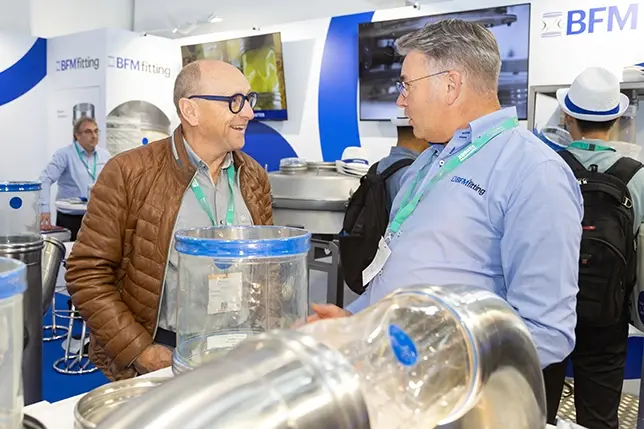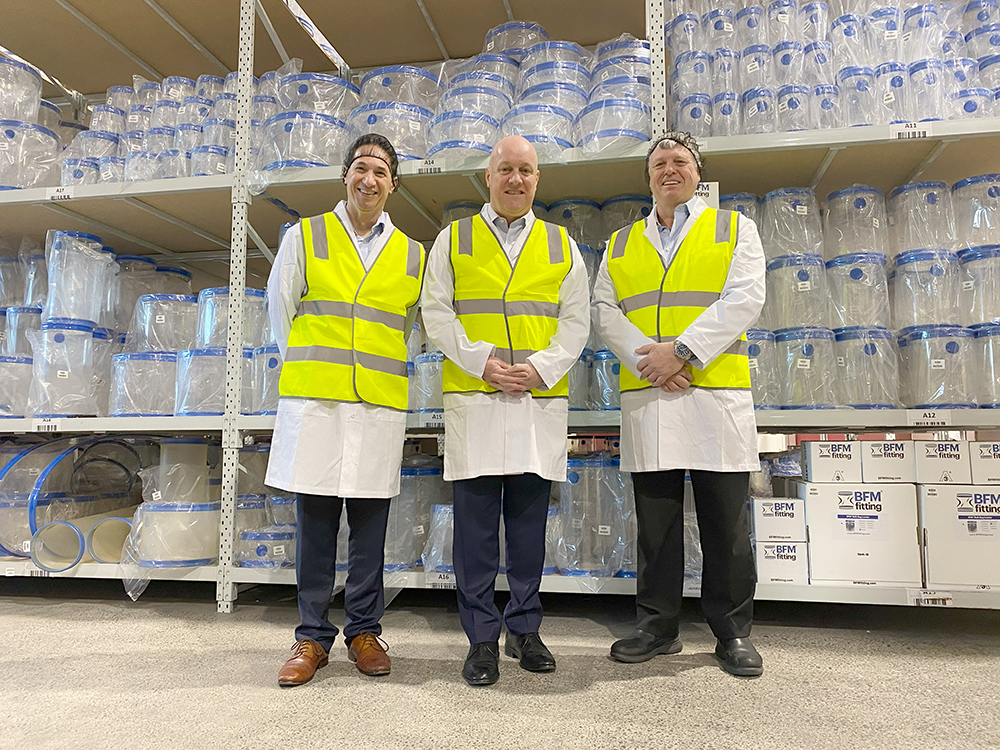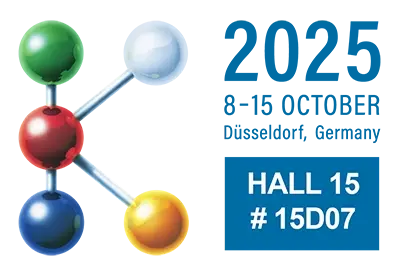The BFM® development team has used our flexible, transparent Seeflex 040E material to create our latest innovation: the BFM® Venting Surge Hopper. It’s an ingenious new solution to bridging - a common problem for manufacturers processing bulk powders.
Surge hoppers and bridging.
Surge hoppers are designed to receive feed material that fluctuates in rate or flow and then deliver it to the rest of the process at a regulated rate, usually via a rotary airlock valve.
 As the rotary valve feeds the product in measured amounts to the process line below it, it's normal for some conveying air to seep back through the airlock. However, if this leakage air is not vented correctly, it can impede material flow as well as cause dust to spread around the plant, and disrupt upstream processes.
As the rotary valve feeds the product in measured amounts to the process line below it, it's normal for some conveying air to seep back through the airlock. However, if this leakage air is not vented correctly, it can impede material flow as well as cause dust to spread around the plant, and disrupt upstream processes.
The biggest air-flow issue with surge hoppers, as with most other hoppers and feed bins, is bridging.
Bridging is when large particles mechanically 'interlock' to form a cohesive arch, stopping the product flow down to the rest of the process. The particles bond together due to varying factors like static, moisture, particle shape, concentration, and temperature.
Without proper air-flow and venting, bridging is amplified.
How do you know when your product is bridging?
Because most surge hoppers are made of stainless steel, there is limited visibility of the product flow so it's only when a downstream process runs out of product that you're aware there is a bridging problem occurring inside. There is often just a small sight glass, and in some steel hoppers, the only way to check the product flow is to actually open an inspection hatch, which poses the risk of significant product spillage.
Then to free the blockage, it's common practice to bang the sides of the hopper to shake the stuck material free using a mallet or similar knocking device. Long term, this can misshape the metal, creating pits on the inside of the hopper, affecting hygiene and, ultimately, structural integrity.
Cleaning fully-enclosed steel surge hoppers is generally only achievable as part of an overall system clean.
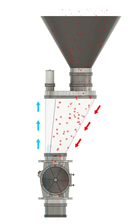 Venting Surge Hoppers - an ideal solution to air-flow problems.
Venting Surge Hoppers - an ideal solution to air-flow problems.
A common solution to hopper flow problems is to introduce an intermediary surge hopper with a dedicated venting system directly above the rotary valve. The hopper is ideally sized to match the rotary valve flow rate and helps reduce pressure differentials, encouraging the flow of product and reducing the likelihood of bridging.
Most venting surge hoppers currently on the market are steel construction so they still have the same issues with visibility and access to product flow to relieve any potential bridging.
The innovation that lets you instantly 'see and free' bridging.
Working closely with rotary valve manufacturers like Airlock India and Gericke Rotaval, the development team at BFM® Global has come up with an innovative approach to vented surge hoppers.
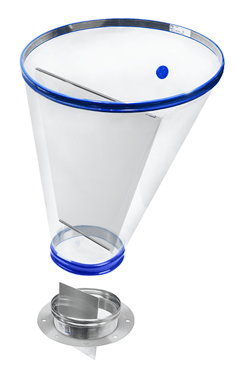 "We've combined the benefits of our transparent and flexible Seeflex 040E material with the BFM® fitting snap-fit system into a uniquely-shaped hopper with built-in product and airflow separation," said BFM®'s Technical Lead, Matthew Bailey.
"We've combined the benefits of our transparent and flexible Seeflex 040E material with the BFM® fitting snap-fit system into a uniquely-shaped hopper with built-in product and airflow separation," said BFM®'s Technical Lead, Matthew Bailey.
"The Venting Surge hopper has an internal partition that allows powder to flow down one side of the partition and displaced air to flow up and out the other. It snap-fits into a custom-made spigot that has a matching separation plate," said Bailey.
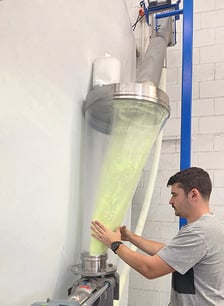 Product flow visibility is a massive advantage.
Product flow visibility is a massive advantage.
The most significant difference over steel hoppers however is the transparency of the walls, made from Seeflex 040E urethane material which means you can see the product flowing - or not flowing in the case of bridging.
"You'll immediately see any blockage, and the key advantage of using a flexible material like urethane is that you can easily just 'massage' away any bridges using your hands” he said.
“Of course, you could also use additional flow aids like air fluidizer valves or mechanical massagers, but the key difference is you can actually see that your product is flowing freely.”
Rotary valve manufacturers agree.
"We think it’s a great new innovation that will appeal to many of our customers who until now have only had the option of steel surge hoppers,” said Ragu Thiagarajan, owner and founder of Airlock India, who manufacture and export quality rotary valves globally.
“With steel hoppers, you just have to keep banging away at the outside in the hope that you're freeing the blockage in the right place and wait until product starts flowing again. This new alternative gives customers continuous visibility and control."
The Venting Surge Hopper utilises the BFM® fitting snap-fit system at the top and bottom so it can be easily removed and replaced, making it more accessible for cleaning processes.
For more information on the Venting Surge Hopper, view the product page.

